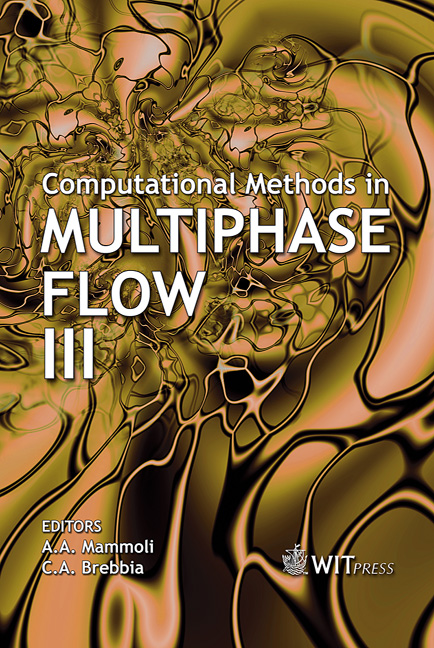Gas-liquid Two-phase Flow In A Downward Facing Open Channel
Price
Free (open access)
Transaction
Volume
50
Pages
10
Published
2005
Size
469 kb
Paper DOI
10.2495/MPF050201
Copyright
WIT Press
Author(s)
D. Toulouse & L. I. Kiss
Abstract
There are certain industrial applications where gas is evacuated from below a solid surface by using vertical grooves. To study this phenomenon experimentally, a solid body with a horizontal gas-generating bottom surface is immersed into a liquid. A downward facing open channel in the form of a rectangular groove is cut into the solid. Gas enters at the lower part of the groove and is evacuated at the two ends. The flow is induced by the buoyancy effect in the channel. The morphology and flow pattern in the downward facing open channel is analysed as a function of the gas flow rate entering the groove. Different flow regimes were identified as the volume fraction of the gas inside the channel was increased. High-speed videography and image processing were used to analyse the flow structure inside the channel and to extract quantitative information such as the volume fraction of the gas and the bubble size distribution. Particle image velocimetry (PIV) and bubble image velocimetry (BIV) were used to study the velocity distribution inside the liquid phase and the velocity of the bubbles. Keywords: two-phase flow, flow pattern, image processing, bubble image velocimetry, gas bubbles. 1 Introduction There are situations in the industry where gas must be evacuated from below a large partially immersed body. It has been observed that thin grooves cut into the downward face of this body improve the evacuation of the gas. To understand this phenomenon, it is necessary to gather some information on the morphology of buoyancy driven gas-liquid flow in an open channel. As it is the
Keywords
two-phase flow, flow pattern, image processing, bubble image velocimetry, gas bubbles.





